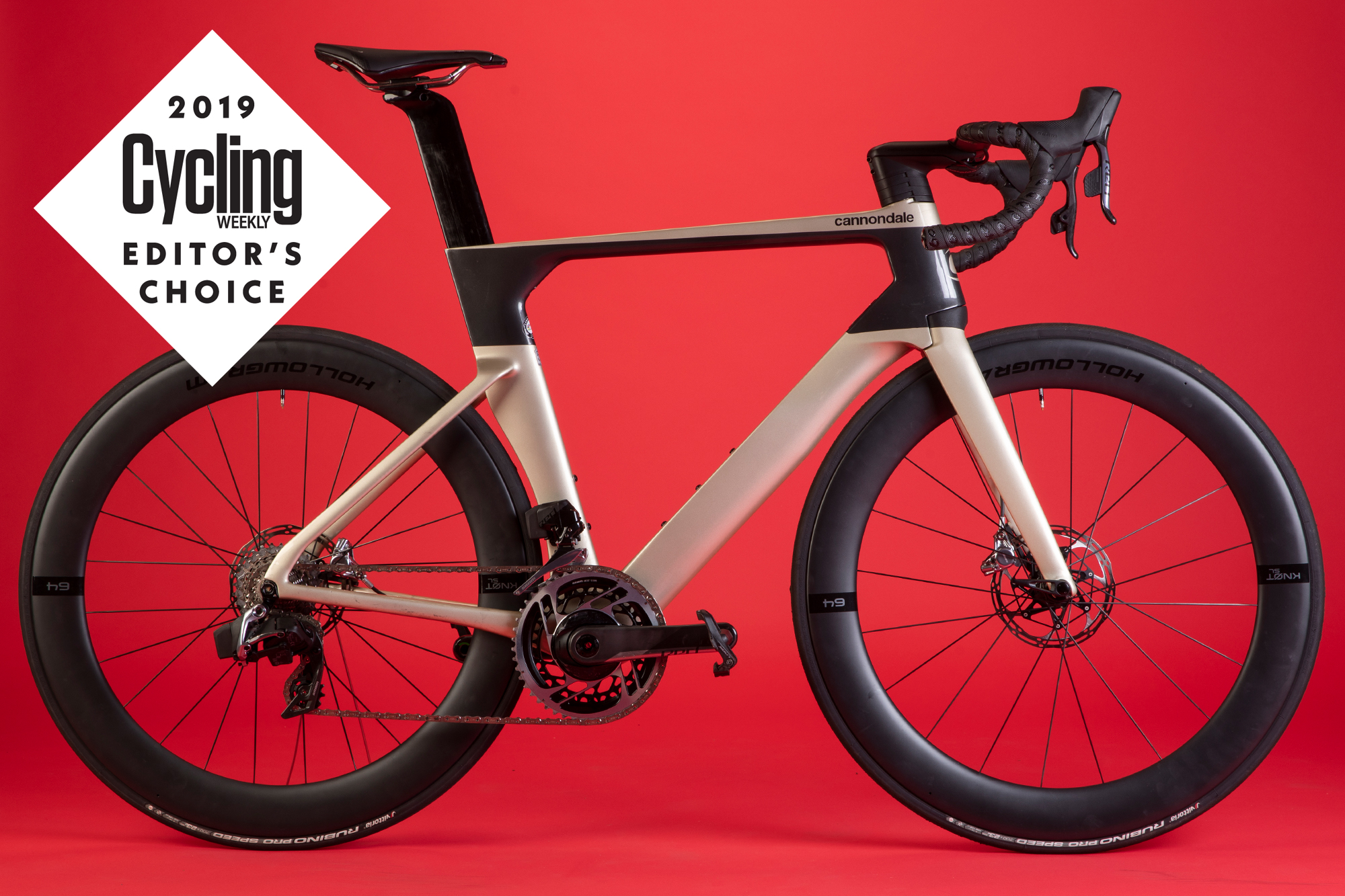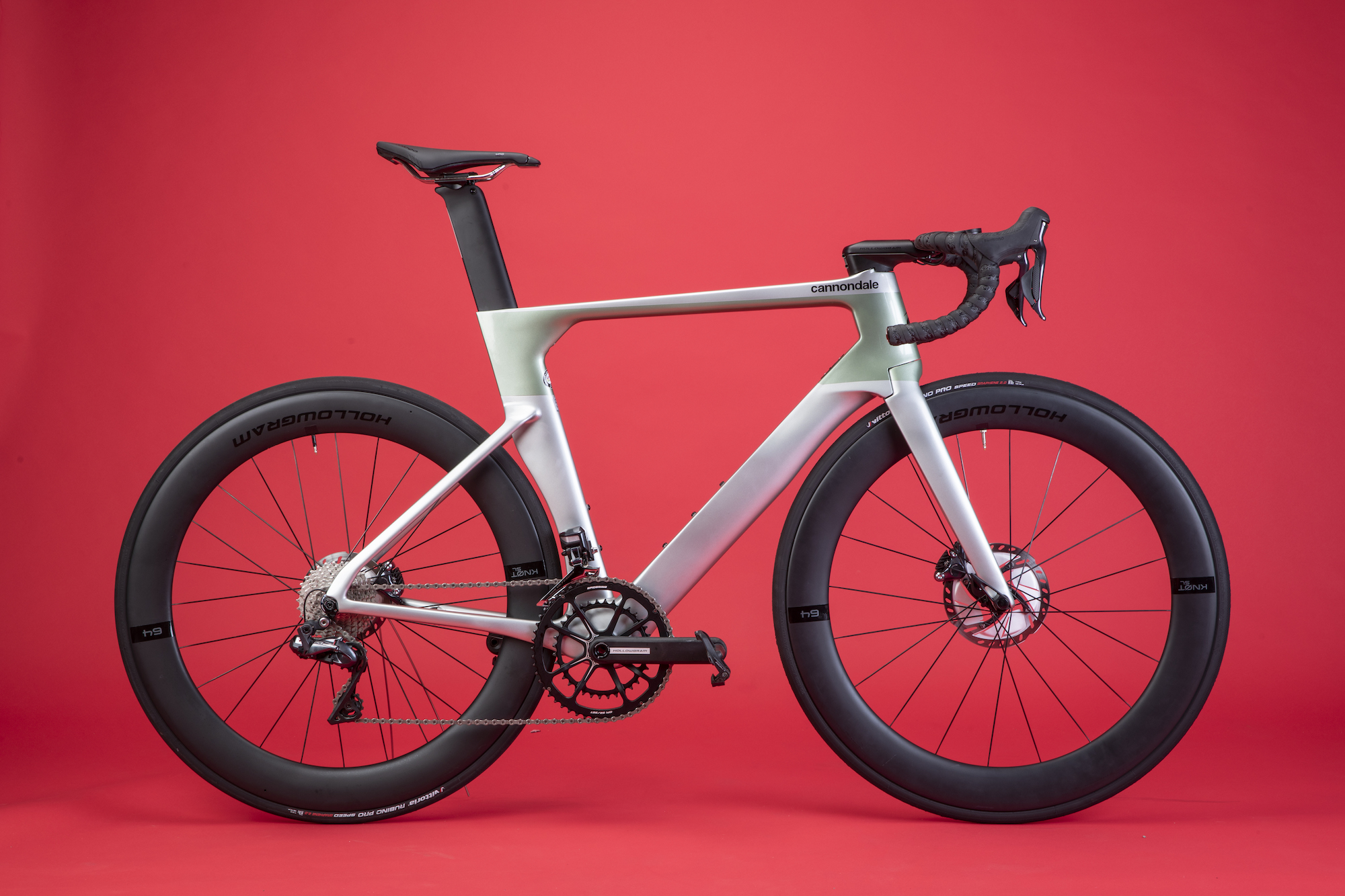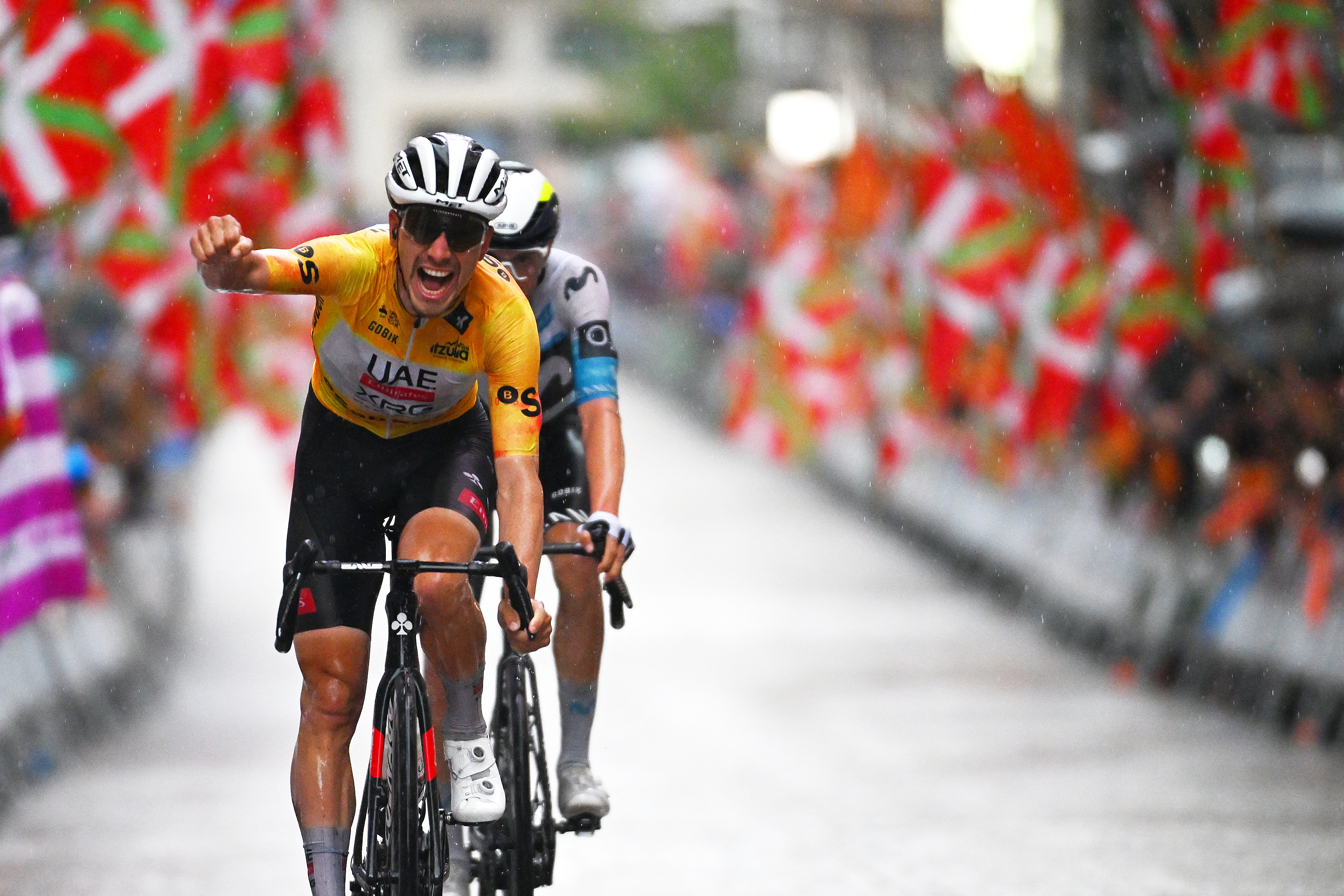Cannondale SystemSix Carbon Ultegra Di2 review
The Cannondale SystemSix avoids the teething problems many brand's first aero bikes suffered from

Cannondale's SystemSix is an impressive all-round package for a brand's first aero bike attempt.
-
+
Compliant frame
-
+
Fast wheels
-
+
Handling
-
-
Weight
-
-
Tyres
You can trust Cycling Weekly.
The Cannondale SystemSix returns to our Editor’s Choice list for the second year on the trot. Over the past year I’ve tested this bike in three different forms, everything from standard all the way up to the all singing and all dancing Hi-Mod version. Every time the SystemSix has demonstrated itself as the full aero package – stiff, fast and superbly good fun.
Cannondale SystemSix: Seamlessly integrated and very aggressive
If you were to imagine an aero bike, there's every chance it would look just like the Cannondale SystemSix – completely angular and very aggressive. Starting with the integrated fork and head tube, each part of the frame leads into the next. The front is a smooth sweep, seamlessly helped by the chine, something which Cannondale says helps make the bike aerodynamically fast by re-attaching air from the wheels to the down tube.
The frame’s tubes are all a kamm-tail design which has proven to be one of the fastest shapes. The beefy front end with its integrated fork is mirrored in the seat tube. The bike’s dropped seat stays, an almost mandatory feature on modern aero bikes, which are particularly exaggerated but do a good job of adding a touch of comfort to an otherwise rigid ride.
The angular design turned a lot of heads on my rides, and more than one person commented on the bike's looks, and all of them mentioned how aggressive it looks and that it's definitely a super bike.
Out on the road the bike’s frame feels alive, coursing with speed. I’ve tested multiple iterations of the SystemSix over the last two years and it remains one of the stiffest and snappiest bike frames that I’ve ridden.
More comfortable than its looks suggest

Given the stark angular shapes of the Cannondale SystemSix, you might think the SystemSix would be uncomfortable to ride but the frame possesses a comfort that belies its chunky nature. Riding this bike both on the potholed roads of London and South Wales, the bike felt calm despite the choppy surface beneath the tyres. Similar roads have shaken me down on competing aero bikes.
The bike’s geometry marks the SystemSix as Cannondale’s most aggressive bike. It’s stack height in a size 56 is 1.5cm shorter than the equivalent SuperSix Evo.
The result is a bike that's comfortable on the descents and fast to handle despite its chunky shapes and overbuilt design. There's no sluggishness on the corners and the bike stays true to its line – again something that can't be said for most brand's first aero bikes. It's also very stable, probably due to it's 57-degree trail, the same as the expert handling Cervélo R5.
At 7.6kg on our scales, the SystemSix isn't as svelte as the other aero bikes launched this year. For example, the Specialized S-Works Venge weighs a slim 6.9kg. However, Cannondale says that the bike's aero prowess makes it as fast as lighter climbing bikes on gradients up to six per cent. I've not been able to wind tunnel test it so I can't prove that true or not, but on the gentle climbs of Girona as well as the shallow rises back at home, it wasn't a chore to ride but I'd probably give that credit to the new wheels.
Wheels that do all the work

These are the Knot 64 wheels, which are very stiff and once you wind them up to speed they don't want to stop rolling. On more than one ride I had friends remark on my rolling speed, and how much faster I was than them because of it.
The rim comes up wider than the Vittoria Rubino tyre specced as stock on the bike, which does look a little strange when riding along.
Contrary to the belief that a flush tyre/rim interface is the most aerodynamic, Cannondale explained that the wider rim and narrow tyre allows the air to reattach itself to the tyre, creating less drag. What's more, the wide rim actually blows the 23mm tyres up to an exaggerated 26mm width, so you do get a bit more width out of your tyres which is worth bearing in mind before you spec 25 or 28mm tyres.
The Vittoria Rubino tyres wouldn't be my first choice of tyre, they’re a little uncomfortable and I’ve suffered a couple of punctures. I’d would swap them for a plusher set to better to offset some of the harshness. However, this would come with an aerodynamic trade-off.
This particular SystemSix sits fourth tier in the SystemSix range, costing £5,499.99 and sitting below the Hi-Mod carbon options. For the price, you get Shimano's Ultegra Di2 drivetrain with a Cannondale Si crank and Spidering chainring. The bike also comes with the two piece Knot SystemBar and, even better, it accommodates round spacers so you need not cut your steerer should you want to alter your stack height.
Thanks to lessons learned from it's Slice time trial bike, Cannondale obviously knows how to make an aerodynamic bike. But what's impressive is that it managed to create a whole package that works very well first time around, when many bike brands historically have taken two or three attempts to get it correct.

Thank you for reading 20 articles this month* Join now for unlimited access
Enjoy your first month for just £1 / $1 / €1
*Read 5 free articles per month without a subscription

Join now for unlimited access
Try first month for just £1 / $1 / €1
Get The Leadout Newsletter
The latest race content, interviews, features, reviews and expert buying guides, direct to your inbox!
-
 The thing that bothers me most when I look back at old school training is that right now we’re doing something equivalently misguided
The thing that bothers me most when I look back at old school training is that right now we’re doing something equivalently misguidedOur columnist's old training diaries reveal old-school levels of lunacy
By Michael Hutchinson Published
-
 'This race is absolutely disgusting': Peloton reacts to another brutal Paris-Roubaix Femmes
'This race is absolutely disgusting': Peloton reacts to another brutal Paris-Roubaix FemmesNow in its fifth edition, Paris-Roubaix Femmes is still a tough race, even for the best bike riders in the world
By Adam Becket Published
-
 ‘It’s the biggest win of my career’ says João Almeida after crushing Itzulia Basque Country success
‘It’s the biggest win of my career’ says João Almeida after crushing Itzulia Basque Country successUAE rider wins the final stage to finish almost two minutes clear of Enric Mas on GC, with Max Schachmann in third
By Peter Cossins Published